Ne obliviscaris — IBM

The empire we will study this week is a real monster. IBM. The so-called “Big Blue” has often been the preferred supplier for countless companies. It was once said that no one has ever been fired for buying IBM products. But today, even though it still exists, its crest has faded…
The birth
IBM was originally created in 1911 from the merger of three companies. The company's main products at that time were tabulators (http://fr.wikipedia.org/wiki/Tabulatrice), equipment designed primarily to perform data aggregation. Their first uses were in the American censuses. (It took 7 years for the first tabulator to do the 1890 census!).
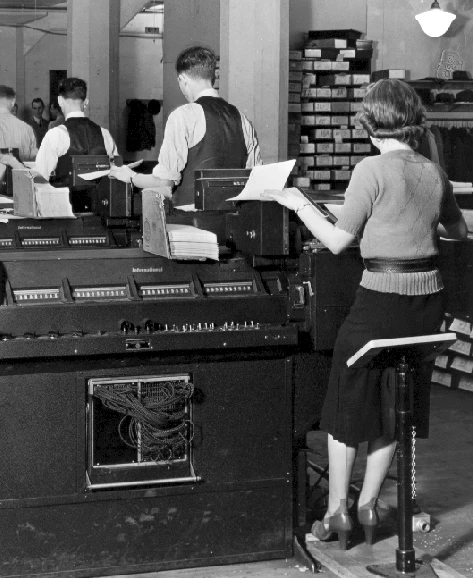
IBM quickly perfected tabulators and pushed the limits of the information these machines could process. In 1944, IBM, in collaboration with Harvard University, launched the first stand-alone computer, the Harvard Mark I ASCC. It could perform lengthy operations automatically, without the need for supervision. It is considered the starting point of modern computing. It is also the computer that invented the word "Bug," because one day one of the technicians found a bug in one of its lamps. (The ancestor of the transistor.)
In 1954, IBM launched Fortran, the first computer language. In 1957, IBM launches the hard disk. And a few years later, they launched the first modern operating system, OS/360 (started in 1964 and its last update was in November 2011).
Following these countless successes, in the early 1970s, IBM became the company with the largest market capitalization.
The PC Saga
A first hesitation
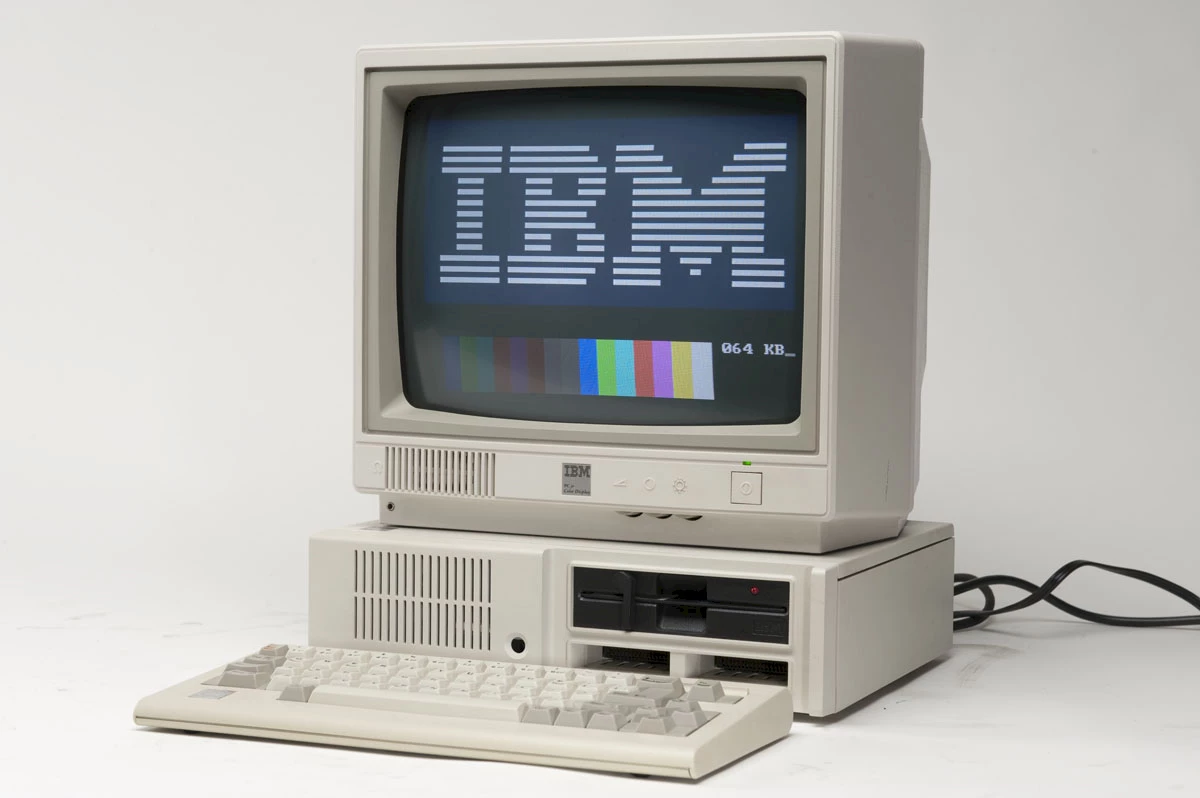
Although the first successful personal computer was the Apple II, it was originally IBM's idea to create personal computers. But at the time, IBM managers were divided as to which direction to take. Half of the managers wanted to see IBM focus on its bread and butter, the mainframes. While other managers wanted the company to invest heavily in a nascent market, personal computers, PCs.
Seeing Apple's success, IBM finally decided to enter the market anyway. IBM executives, so unconvinced of the success of this market segment, decided to outsource the development of the required software, as well as many of its components. IBM tried to buy CP/M, Digital Research's operating system, but negotiations failed.
Like Superman, they created their enemies
Mary Gates, Bill Gates' mother, worked for IBM as a lawyer at that time. When negotiations with Digital Research failed, she convinced IBM managers to meet with her son, president of a company he had created with friends when he dropped out of university, Microsoft. Bill Gates was able to convince management that he could develop a product, compatible with CP/M, quickly.
Bill Gates' mother wrote the contract with Microsoft. As a result, IBM pays Microsoft to do the development and maintenance of DOS, but keeps complete control of it. He does not need IBM's endorsement for decisions about the evolution of the operating system. It even retains the intellectual property.
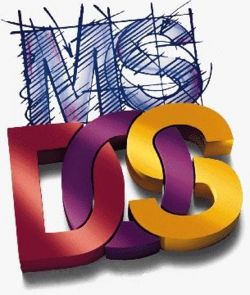
This agreement works for a few years, as long as both companies are on the same wavelength. But in 1984, the relationship between the two companies became even more complicated when Microsoft agreed to allow DOS to be distributed with the first PC clones. Following negotiations, Microsoft and IBM agreed to create two separate development teams, each owning the modifications they made. The result was this agreement: MS-DOS and PC-DOS.
IBM thinks it has signed a good agreement because it believes that customers will want to buy the genuine "IBM PCs". But Microsoft's gamble pays off, PC clones become much more popular and IBM becomes only a second-rate player in the market. Microsoft triumphs, because all clone manufacturers distribute MS-DOS.
PS/2
Having seen the PC market become bigger and bigger, IBM decided to come back in 1987. Having learned from their mistakes, they created the second iteration of PCs, the IBM PS/2 and a new operating system, OS/2. But unlike their first foray into the market, they decided to keep control over almost everything. Only Intel processors are kept to preserve compatibility with software written for DOS.
The PS/2 introduces several innovations. It is the first 32-bit computer with protected memory, with a modern multi-tasking implementation. It introduces: standard keyboard and mouse connectors, VGA graphics card, MicroChannel bus and SCSI interface. But the computer has two problems. The first: they are expensive, IBM's quality standards being too high for their actual use. The second: being too afraid of being cloned again by other companies, IBM keeps too much information about its new system secret. This leads many developers and peripheral manufacturers to boycott the computer. This lack of supply quickly affects sales. The PS/2 quickly becomes a commercial failure. The PS/2 and OS/2 will remain confined to a niche, banking, where IBM's influence is still very strong.
But IBM, being too afraid of losing its investments, ends up licensing its technologies to the companies that cloned its first PCs]].
Windows NT
But clone manufacturers refuse to include OS/2 with their computers, as users prefer Microsoft Windows. IBM then decided to ally itself with its former collaborator: Microsoft. He convinced the Redmond giant to jointly develop OS/2. Their goal was essentially to allow OS/2 to run, without performance penalty, applications initially developed for Windows.
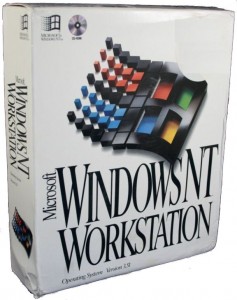
OS/2 2.0 comes out with almost perfect compatibility with Windows, missing only the printer support. But in 1990, the relationship between the companies becomes tense when Microsoft refuses to abandon Windows. (Windows 3.0 still sells better than OS/2 even though it is technologically inferior). After a few months of war between the two companies, Microsoft threatens IBM to withdraw its intellectual property contained inside OS/2. IBM weakens and offers a market to Microsoft. They give them permission to use the OS/2 source code as they wish as long as Microsoft lets them keep compatibility with Windows 3.1. Microsoft agrees.
Microsoft will launch Windows NT in 1993. Windows NT basically contains the core of OS/2, with the graphical user interface of Windows 3.1. It is this same base that is still used in current operating systems, such as Windows XP and Windows 7.
Its bad acquisitions
IBM, throughout its history, has often made acquisitions and sold some of its divisions.
Sale of Lexmark
In 1991, IBM decided to sell its loss-making division that produced and sold printers. Its division becomes the Lexmark company that still exists. After an internal restructuring, the company became profitable in 1993, when IBM declared an $8 billion deficit at the same time. The biggest loss ever reported at the time.
Purchase of Lotus
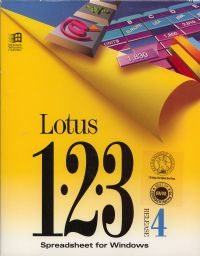
In 1995, IBM bought Lotus, which produces 123, a popular spreadsheet, to compete with Microsoft, which developed Excel. But Lotus soon proved to be a poor competitor to Microsoft. Executives had spent a significant amount of development time optimizing their software to run on as many computers as possible, old or new, large or small, believing that universal accessibility was the winning strategy.
But Microsoft realizes that users rarely update their software and that the majority of sales occur at the time of computer purchase. As new computers become more and more powerful, Microsoft decides not to optimize Excel and focuses on integrating unique features.
Purchase of Rationale
In 2003, IBM decided to buy the Rational company, which produces a lot of popular products for developers, such as Rational Rose, a popular UML editing and generation software.
But quickly, the software developed by Rational was discontinued one after the other, having lost its clientele to competitors who were more proactive in improving their products.
Lenovo's Vente
In 2005, IBM decided to sell another of its loss-making PC manufacturing divisions to Lenovo, believing that the future is software and services. But Lenovo restructured the division, and a few years later, the company made a profit.
Conclusions
IBM was a proactive player in the early years of modern computing. But its many hesitations, bad agreements and poor and disinterested management made it difficult to transform IBM, which in the 1970s was the company that owned virtually the entire computer market, into a mere player on the world chessboard.
